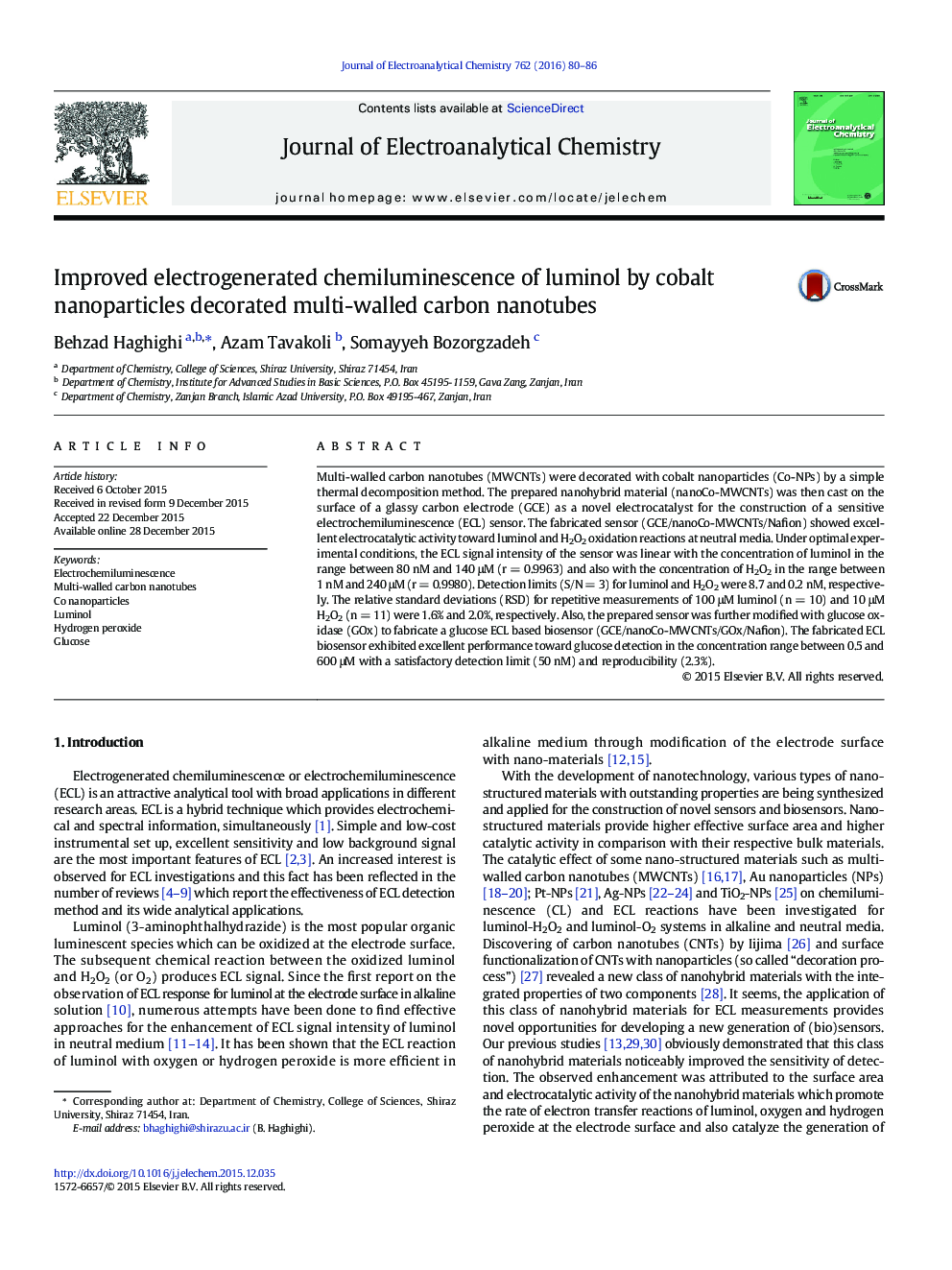| Article ID | Journal | Published Year | Pages | File Type |
|---|---|---|---|---|
| 218098 | Journal of Electroanalytical Chemistry | 2016 | 7 Pages |
•GCE was modified with Co nanoparticles decorated MWCNTs.•Excellent electrocatalytic activity observed for O2 reduction.•Excellent electrocatalytic activity observed for luminol and H2O2 oxidation.•The sensor showed strong sensitizing effect on luminol ECL response.•The proposed ECL sensor was applied for luminol, H2O2 and glucose detection.
Multi-walled carbon nanotubes (MWCNTs) were decorated with cobalt nanoparticles (Co-NPs) by a simple thermal decomposition method. The prepared nanohybrid material (nanoCo-MWCNTs) was then cast on the surface of a glassy carbon electrode (GCE) as a novel electrocatalyst for the construction of a sensitive electrochemiluminescence (ECL) sensor. The fabricated sensor (GCE/nanoCo-MWCNTs/Nafion) showed excellent electrocatalytic activity toward luminol and H2O2 oxidation reactions at neutral media. Under optimal experimental conditions, the ECL signal intensity of the sensor was linear with the concentration of luminol in the range between 80 nM and 140 μM (r = 0.9963) and also with the concentration of H2O2 in the range between 1 nM and 240 μM (r = 0.9980). Detection limits (S/N = 3) for luminol and H2O2 were 8.7 and 0.2 nM, respectively. The relative standard deviations (RSD) for repetitive measurements of 100 μM luminol (n = 10) and 10 μM H2O2 (n = 11) were 1.6% and 2.0%, respectively. Also, the prepared sensor was further modified with glucose oxidase (GOx) to fabricate a glucose ECL based biosensor (GCE/nanoCo-MWCNTs/GOx/Nafion). The fabricated ECL biosensor exhibited excellent performance toward glucose detection in the concentration range between 0.5 and 600 μM with a satisfactory detection limit (50 nM) and reproducibility (2.3%).
Graphical abstractFigure optionsDownload full-size imageDownload as PowerPoint slide
